
Ever since I first happened upon these stones in a Cambridge courtyard, I've been wondering what they are and who sculpted them. And now I've finally found out.
There are three of these stones:
• a round fat boulder, roughly hewn;
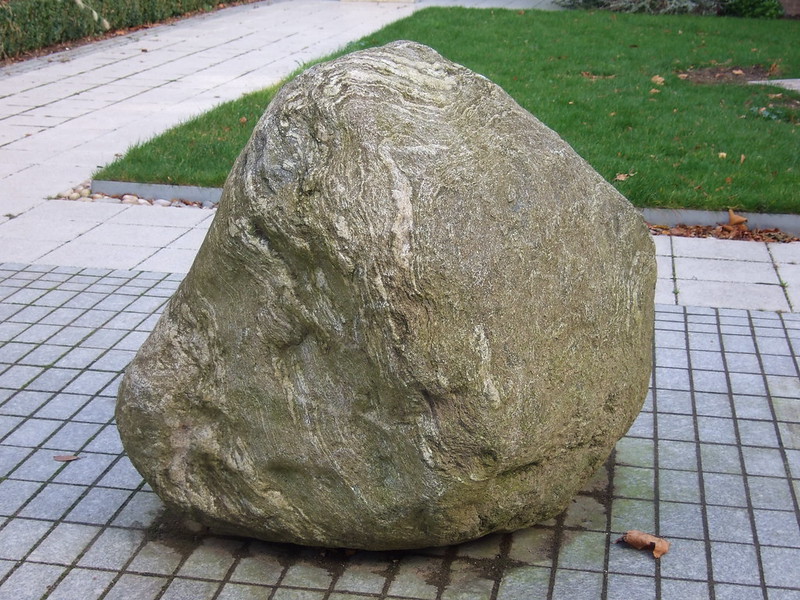
• a tall stele, jagged and elegant;

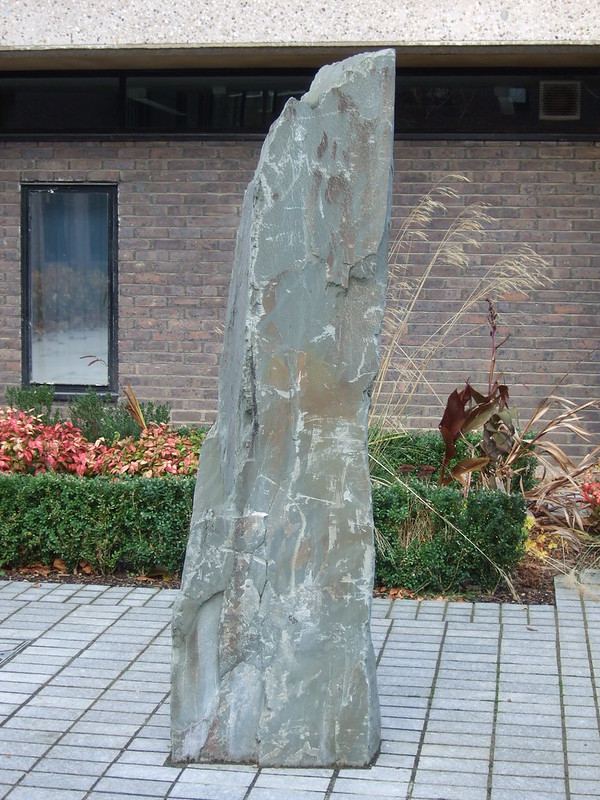
• and a low flat rock, like a gravestone waiting for an inscription.
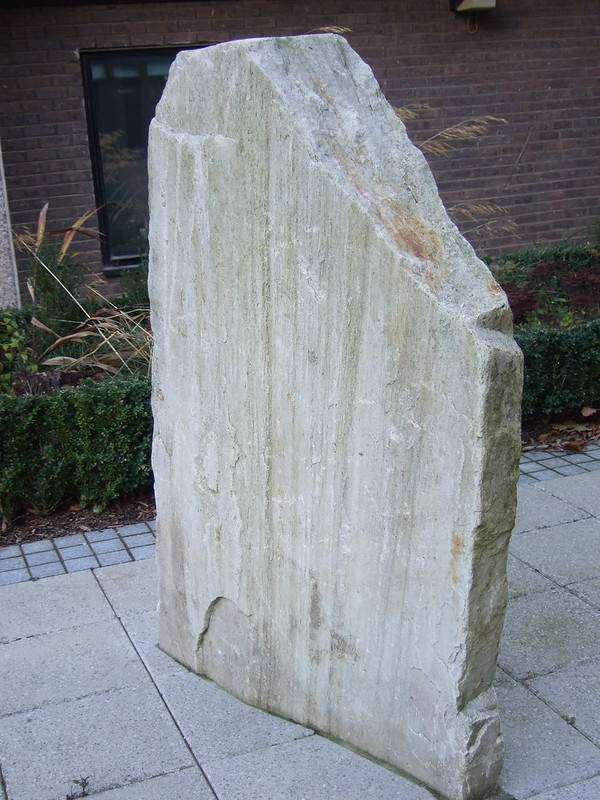
It looks thin when viewed sideways,


The stones sit in a small garden, tucked in between the Faculty of Classics and the Faculty of Asian and Middle-Eastern Studies (aka FAMES) on the University of Cambridge's Sidgwick Site campus.
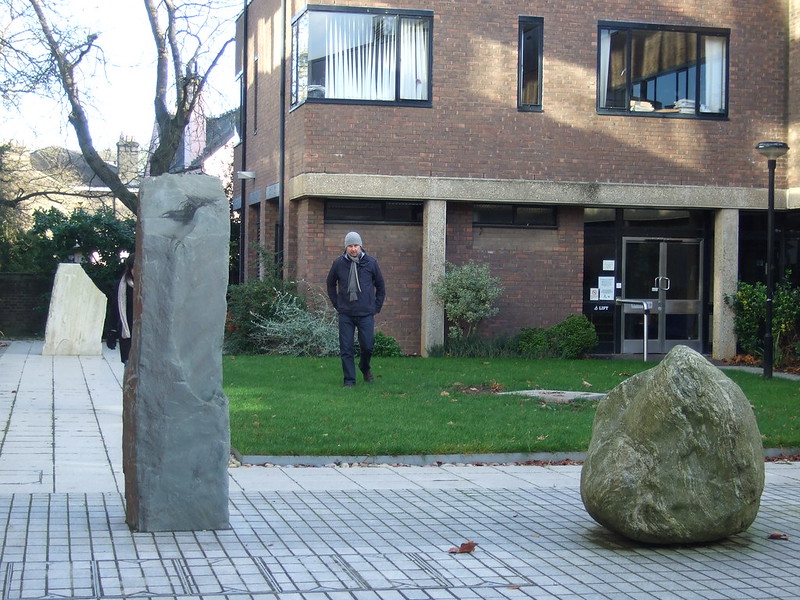
I asked myself: Are they three Oriental sages, meditating on nature and death?
Or are they riffs on the theme of classical statues, more ancient and unfinished than the sophisticated kore smiling at us from the nearby lobby of the Classics Faculty?
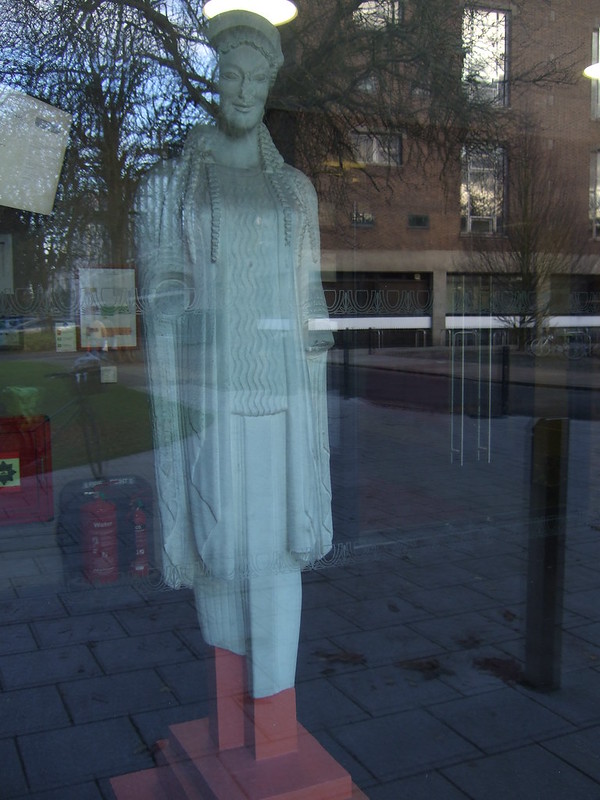
But no! Surprise!
They are not art at all!
Thanks to the amazing detective work of Mary Munro of the Classics Faculty, I found out the following:
In 2000-2010, a small extension for the Classics building was constructed, and as part of this, the grass plot between Classics and FAMES was landscaped. FAMES in particular was very keen on a garden, and it was decided to adopt a minimalist approach: a flower border, a single tree, and three boulders -- "rather reminiscent of a Japanese garden", says Mary Munro.
Colleagues of the Faculty visited a stone yard in Fenstanton (possibly Bannold) in the spring of 2010 and chose:
• one large boulder of Scottish granite
• one pillar of Welsh slate
• and a 'stele' of Western Irish quartz.

What do you know? They are rocks! Not sculptures!
Which is why it was decided not to include them in the Cambridge Sculpture Trails.
But what is the difference?
Do you look at them differently, now that you know you can never find a plaque with the sculptor's name on it?
Do rocks, as soon as they are arranged into a pattern by human hands, take on meanings associated with art?
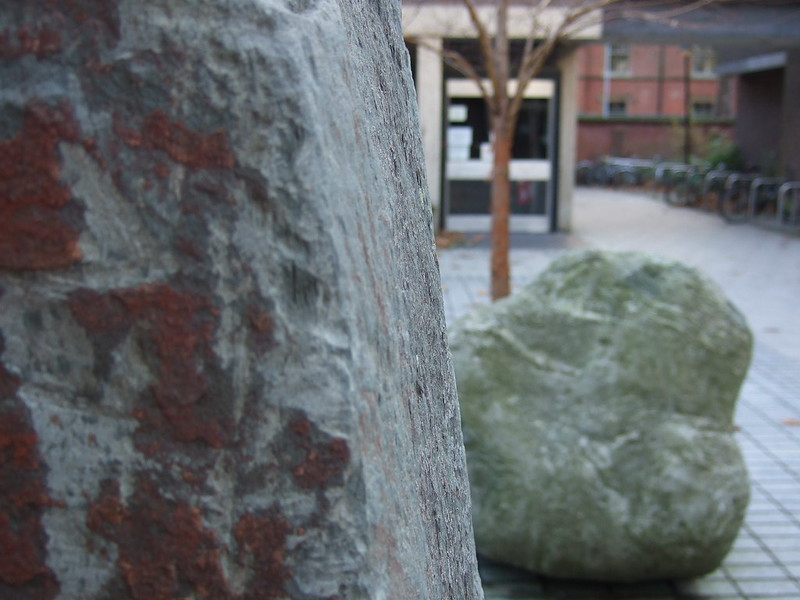


They remind me of the natural stone fountains sold by Stone Forest in Santa Fe, New Mexico.
ReplyDeleteWouldn't these be considered design elements in a work of landscape architecture?
What a gorgeous collection! I would love to have one of those fountains. I have to say of the kinds of sound I love in a garden these are my favourites: water, cockerels, bees. When I studied art history in Germany, 'garden architecture' (as it was called) was part of the curriculum so it could certainly be considered an 'art'.
DeleteThis comment has been removed by the author.
ReplyDeleteThank you so much for visiting my blog and your kinds words about my video and family. How did you find me/my blog? I love being introduced to new blogs and yours seems really interesting. I studied for a semester in college in 1996 in London. I lived in NottingHill Gate and studied at Birkbeck College, a division of the University of London. If I recall correctly I took a day trip with other students to Cambridge and enjoyed walking around and exploring the town/college campuses. I can see why these stones intrigue you and admire your quest to find out their backstory. Thank you for sharing.
ReplyDeleteI think I found your blog via Sharefest...? (Can that be right? *tries to retrace steps*) How exciting, that you were at Birkbeck. I taught for their extramural programme for a year in the early 90s; they are a fantastic college. And you've been to Cambridge! How lovely! I really want to do a 'tourist track' post one of these days. Living here means that I tend to wander off the beaten track a lot, forgetting that for most people this city isn't familiar at all! :-) Thanks so much for visiting.
DeleteLove the rocks and their natural beauty. They do indeed look like either a Japanese Garden or an off shoot of Stonehenge. Don't mess with mother nature. She is beautiful as she is.
ReplyDeleteStonehenge! I hadn't thought of that but too right. The rocks have been placed with deliberation, just like the rocks at Stonehenge, I guess.
Delete